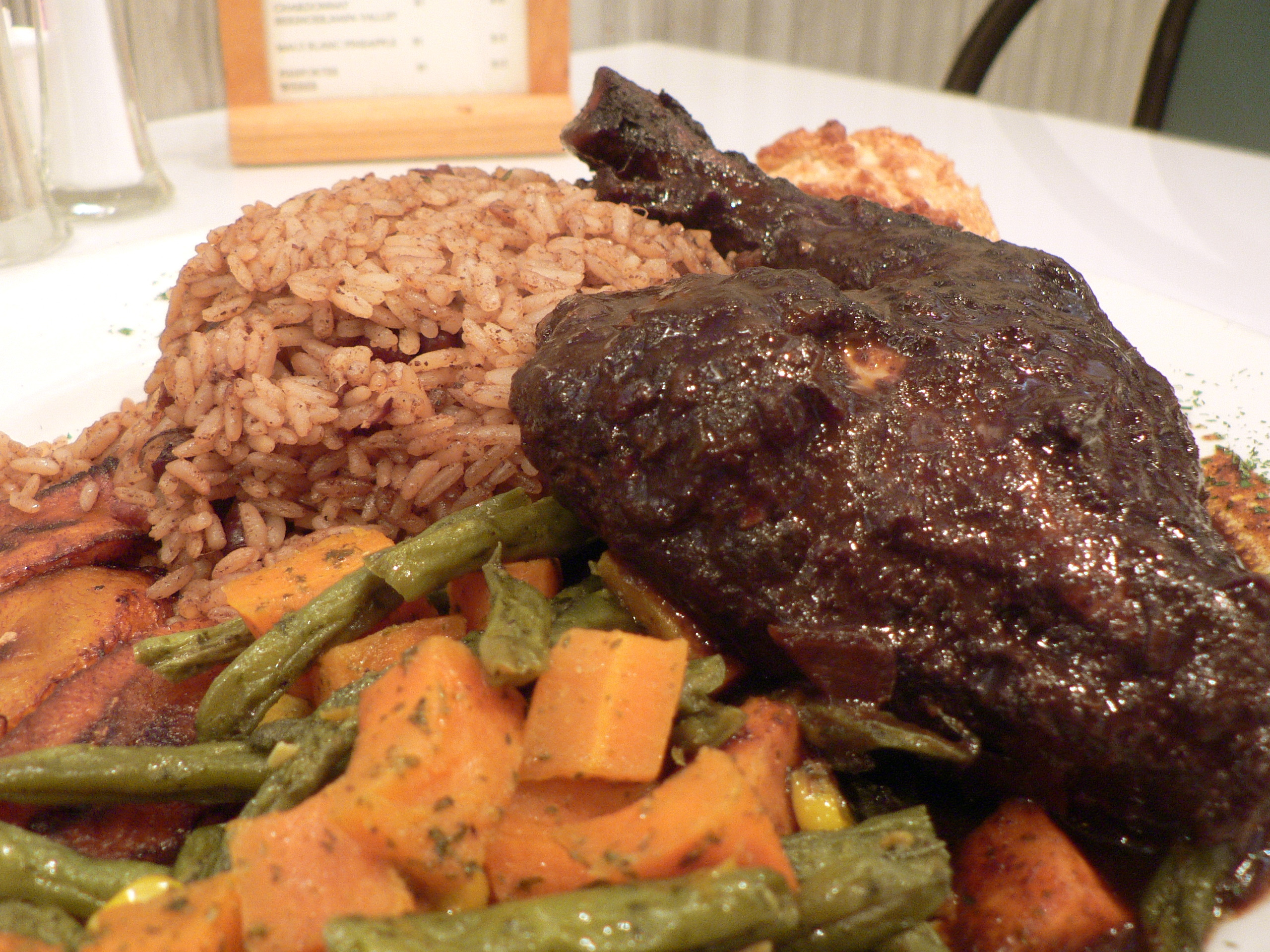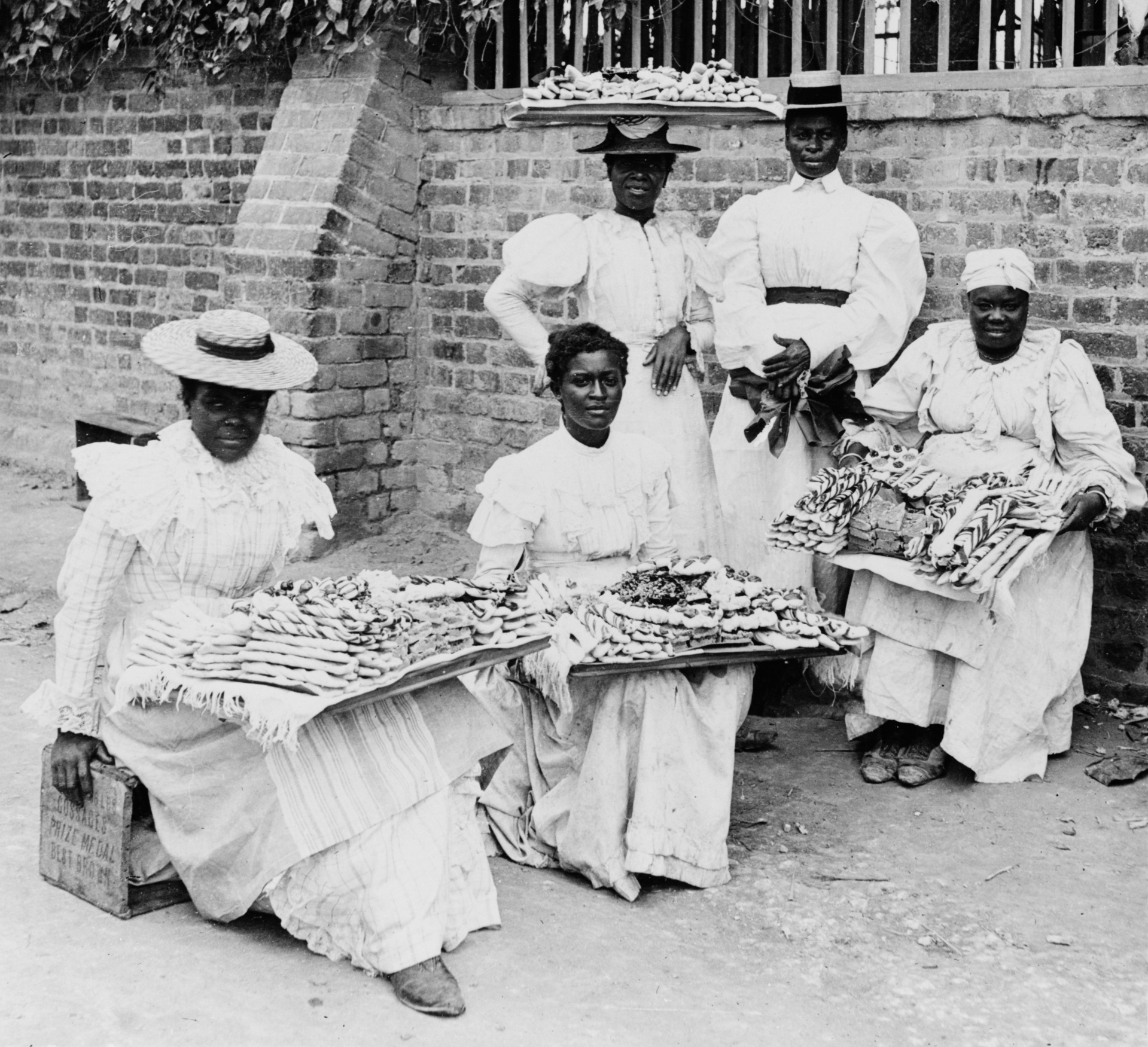|
Gizzada
Gizzada or grizzada, also referred to as pinch-me-round, and known as queijada in the Portuguese language, is a pastry in Jamaican cuisine and Portuguese cuisine. The tart is contained in a small, crisp pastry shell with a pinched crust and filled with a sweet and spiced coconut filling. Trinidad also has a similar treat referred to as the coconut tart. See also *Grater cake – a dessert of grated coconut in a fondant of sugar in Jamaican cuisine *List of Jamaican dishes This is a list of Jamaican dishes and foods. Jamaican cuisine includes a mixture of cooking techniques, flavors, spices and influences from the indigenous people on the island of Jamaica, and the Africans who have inhabited the island. It is also ... * Toto – a small coconut cake in Jamaican cuisine References Jamaican cuisine Portuguese cuisine Tarts Foods containing coconut {{Jamaica-cuisine-stub ... [...More Info...] [...Related Items...] OR: [Wikipedia] [Google] [Baidu] |
List Of Jamaican Dishes
This is a list of Jamaican dishes and foods. Jamaican cuisine includes a mixture of cooking techniques, flavors, spices and influences from the Indigenous peoples, indigenous people on the island of Jamaica, and the Ethnic groups of Africa, Africans who have inhabited the island. It is also influenced by the crops introduced into the island from tropical West Africa and Southeast Asia, which are now grown locally. Jamaican cuisine includes dishes from the different cultures brought to the island, while other dishes are novel or a fusion cuisine, fusion of techniques and traditions. A wide variety of seafood, tropical fruits, and meats are available. Jamaican dishes and foods * Ackee and saltfish, made from the local fruit ackee and dried and salted cod (saltfish). This is the national dish of Jamaica. It is often served with bread, Jamaican fried dumplings, bammy (cassava bread) or roasted breadfruit. * Bammy, a kind of savoury cassava bread * Breadfruit, served roasted, f ... [...More Info...] [...Related Items...] OR: [Wikipedia] [Google] [Baidu] |
Toto (dessert)
Toto (also referred to as tuoto and toe-toe bulla) is a small coconut cake in Jamaican cuisine served as a snack or dessert.Caribbean – Bruce Geddes – Google Books p. 238. The cake is typically prepared with shredded coconut, , flour, and |
Grater Cake
Grater cake is a dessert of grated coconut in a fondant of sugar in Jamaican cuisine. Frederic Gomes Cassidy, Robert Brock Le PagDictionary of Jamaican Englishpage 72 While refined, or white sugar, is now often used, when "wet" or "new" brown sugar was used, it was known as grater brute. See also *Toto (dessert) * Gizzada * List of Jamaican dishes This is a list of Jamaican dishes and foods. Jamaican cuisine includes a mixture of cooking techniques, flavors, spices and influences from the indigenous people on the island of Jamaica, and the Africans who have inhabited the island. It is also ... References Jamaican desserts Foods containing coconut Jamaican cuisine {{jamaica-cuisine-stub ... [...More Info...] [...Related Items...] OR: [Wikipedia] [Google] [Baidu] |
Jamaican Cuisine
Jamaican cuisine includes a mixture of cooking techniques, flavours and spices influenced by Amerindian cuisine, Amerindian, Cuisine of Africa, African, Irish cuisine, Irish, English cuisine, English, French cuisine, French, Portuguese cuisine, Portuguese, Spanish cuisine, Spanish, Indian cuisine, Indian, Chinese cuisine, Chinese and Arab cuisine, Middle Eastern people who have inhabited the island. It is also influenced by the crops introduced into the island from tropical Southeast Asia, many of which are now grown locally. A wide variety of seafood, tropical fruits and meats are available. Some Jamaican dishes are variations on cuisines brought to the island from elsewhere. These are often modified to incorporate local produce and spices. Others are novel or Fusion cuisine, fusion and have developed locally. Popular Jamaican dishes include curry goat, fried dumplings, ackee and saltfish. Jamaican patty, Jamaican patties along with various pastries, breads and beverages are also p ... [...More Info...] [...Related Items...] OR: [Wikipedia] [Google] [Baidu] |
Vanilla
Vanilla is a spice derived from orchids of the genus ''Vanilla (genus), Vanilla'', primarily obtained from pods of the Mexican species, flat-leaved vanilla (''Vanilla planifolia, V. planifolia''). Pollination is required to make the plants produce the fruit from which the vanilla spice is obtained. In 1837, Belgian botanist Charles François Antoine Morren discovered this fact and pioneered a method of artificially pollinating the plant. The method proved financially unworkable and was not deployed commercially. In 1841, Edmond Albius, a 12-year-old enslaved child who lived on the French island of Réunion in the Indian Ocean, discovered that the plant could be hand-pollination, hand-pollinated. Hand-pollination allowed global cultivation of the plant. Noted French botanist and plant collector Jean Michel Claude Richard falsely claimed to have discovered the technique three or four years earlier. By the end of the 20th century, Albius was considered the true discoverer ... [...More Info...] [...Related Items...] OR: [Wikipedia] [Google] [Baidu] |
Tart
A tart is a baked dish consisting of a filling over a pastry base with an open top not covered with pastry. The pastry is usually shortcrust pastry; the filling may be sweet or savoury, though modern tarts are usually fruit-based, sometimes with custard. Tartlet refers to a miniature tart; an example would be egg tarts. The categories of "tart", "Flan (pie), flan", "quiche", and "pie" overlap, with no sharp distinctions. History The French language, French word ''tarte'' can be translated to mean either pie or tart, as both are mainly the same with the exception of a pie usually covering the filling in pastry, while flans and tarts leave it open. Tarts are thought to have either come from a tradition of layering food, or to be a product of Medieval pie making. Enriched dough (i.e. short crust) is thought to have been first commonly used in 1550, approximately 200 years after pies. In this period, they were viewed as high-cuisine, popular with nobility, in contrast to the view ... [...More Info...] [...Related Items...] OR: [Wikipedia] [Google] [Baidu] |
Portuguese Cuisine
The oldest known book on Portuguese cuisine, entitled ''Livro de Cozinha da Infanta D. Maria de Portugal'', from the 16th century, describes many popular dishes of meat, fish, poultry and others. ''Culinária Portuguesa'', by António-Maria De Oliveira Bello, better known as Olleboma; was published in 1936. Despite being relatively restricted to an Atlantic, Celtic sustenance, the Portuguese cuisine also has strong French and Mediterranean influences. The influence of Portugal's spice trade in the East Indies, Africa, and Americas is also notable, especially in the wide variety of spices used. These spices include ''piri piri'' (small, fiery chili peppers), white pepper, black pepper, saffron, paprika, clove, allspice, cumin, cinnamon and nutmeg are used in meat, fish or multiple savoury dishes from Continental Portugal, the Azores and Madeira islands. Cinnamon, vanilla, lemon zest, orange zest, aniseed, clove and allspice are used in many traditional desserts and so ... [...More Info...] [...Related Items...] OR: [Wikipedia] [Google] [Baidu] |
Portuguese Language
Portuguese ( or, in full, ) is a western Romance language of the Indo-European language family, originating in the Iberian Peninsula of Europe. It is an official language of Portugal, Brazil, Cape Verde, Angola, Mozambique, Guinea-Bissau and São Tomé and Príncipe, while having co-official language status in East Timor, Equatorial Guinea, and Macau. A Portuguese-speaking person or nation is referred to as " Lusophone" (). As the result of expansion during colonial times, a cultural presence of Portuguese speakers is also found around the world. Portuguese is part of the Ibero-Romance group that evolved from several dialects of Vulgar Latin in the medieval Kingdom of Galicia and the County of Portugal, and has kept some Celtic phonology in its lexicon. With approximately 250 million native speakers and 24 million L2 (second language) speakers, Portuguese has approximately 274 million total speakers. It is usually listed as the sixth-most spoken language, the third-most sp ... [...More Info...] [...Related Items...] OR: [Wikipedia] [Google] [Baidu] |
Nutmeg
Nutmeg is the seed or ground spice of several species of the genus ''Myristica''. ''Myristica fragrans'' (fragrant nutmeg or true nutmeg) is a dark-leaved evergreen tree cultivated for two spices derived from its fruit: nutmeg, from its seed, and mace, from the seed covering. It is also a commercial source of an essential oil and nutmeg butter. Conifers of the genus ''Torreya'', commonly known as the nutmeg yews, have edible seeds of similar appearance, but are not closely related to ''Myristica fragrans'', and are not used as a spice. Indonesia is the main producer of nutmeg and mace. If consumed in amounts exceeding its typical use as a spice, nutmeg powder may produce allergic reactions, cause contact dermatitis, or have psychoactive effects. Although used in traditional medicine for treating various disorders, nutmeg has no scientifically confirmed medicinal value. Common nutmeg Nutmeg is the spice made by grinding the seed of the fragrant nutmeg tree (''Myristica fragra ... [...More Info...] [...Related Items...] OR: [Wikipedia] [Google] [Baidu] |
West Indian
A West Indian is a native or inhabitant of the West Indies (the Antilles and the Lucayan Archipelago). For more than 100 years the words ''West Indian'' specifically described natives of the West Indies, but by 1661 Europeans had begun to use it also to describe the descendants of European colonists who stayed in the West Indies. Some West Indian people reserve this term for citizens or natives of the British West Indies. See also * Caribbean people * History of colonialism * History of the West Indian cricket team * Spanish colonization of the Americas * West Indian American Caribbean Americans or West Indian Americans are Americans who trace their ancestry to the Caribbean. Caribbean Americans are a multi-ethnic and multi-racial group that trace their ancestry further in time mostly to Africa, as well as Asia, the ... References Further reading * * * {{Caribbean-stub Caribbean people Demonyms ... [...More Info...] [...Related Items...] OR: [Wikipedia] [Google] [Baidu] |
Sugar
Sugar is the generic name for sweet-tasting, soluble carbohydrates, many of which are used in food. Simple sugars, also called monosaccharides, include glucose, fructose, and galactose. Compound sugars, also called disaccharides or double sugars, are molecules made of two bonded monosaccharides; common examples are sucrose (glucose + fructose), lactose (glucose + galactose), and maltose (two molecules of glucose). White sugar is a refined form of sucrose. In the body, compound sugars are hydrolysed into simple sugars. Longer chains of monosaccharides (>2) are not regarded as sugars, and are called oligosaccharides or polysaccharides. Starch is a glucose polymer found in plants, the most abundant source of energy in human food. Some other chemical substances, such as glycerol and sugar alcohols, may have a sweet taste, but are not classified as sugar. Sugars are found in the tissues of most plants. Honey and fruits are abundant natural sources of simple sugars. Suc ... [...More Info...] [...Related Items...] OR: [Wikipedia] [Google] [Baidu] |
Coconut
The coconut tree (''Cocos nucifera'') is a member of the palm tree family ( Arecaceae) and the only living species of the genus ''Cocos''. The term "coconut" (or the archaic "cocoanut") can refer to the whole coconut palm, the seed, or the fruit, which botanically is a drupe, not a nut. The name comes from the old Portuguese word '' coco'', meaning "head" or "skull", after the three indentations on the coconut shell that resemble facial features. They are ubiquitous in coastal tropical regions and are a cultural icon of the tropics. The coconut tree provides food, fuel, cosmetics, folk medicine and building materials, among many other uses. The inner flesh of the mature seed, as well as the coconut milk extracted from it, form a regular part of the diets of many people in the tropics and subtropics. Coconuts are distinct from other fruits because their endosperm contains a large quantity of clear liquid, called ''coconut water'' or ''coconut juice''. Mature, ripe coconut ... [...More Info...] [...Related Items...] OR: [Wikipedia] [Google] [Baidu] |


.jpg)




